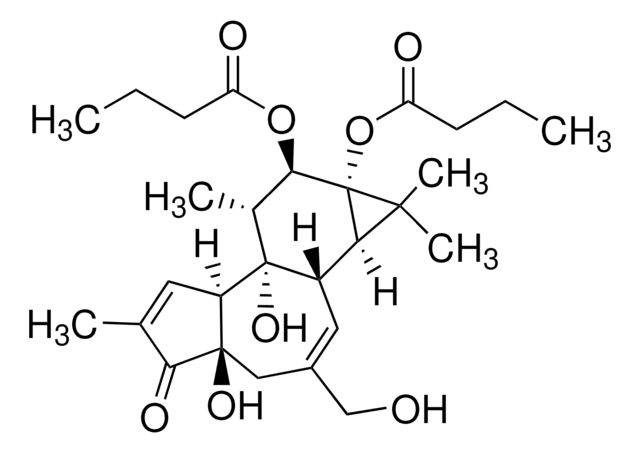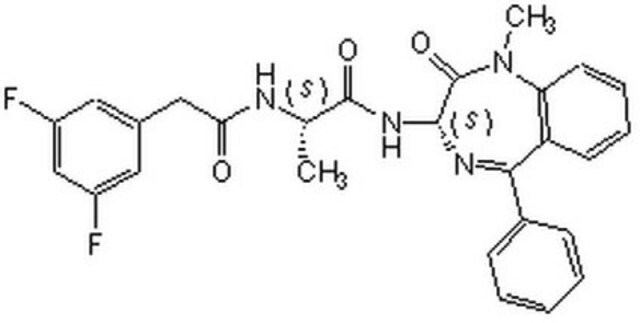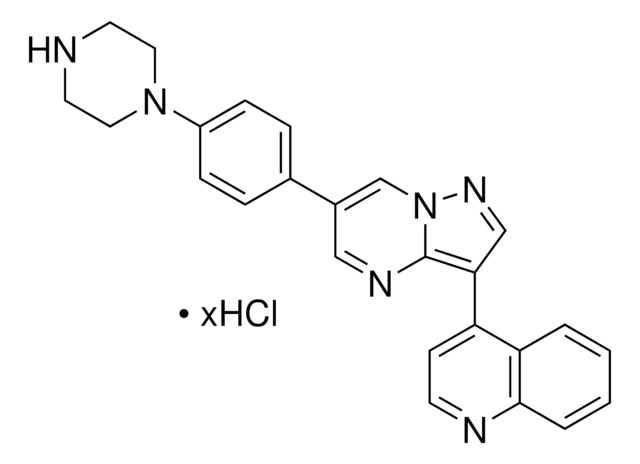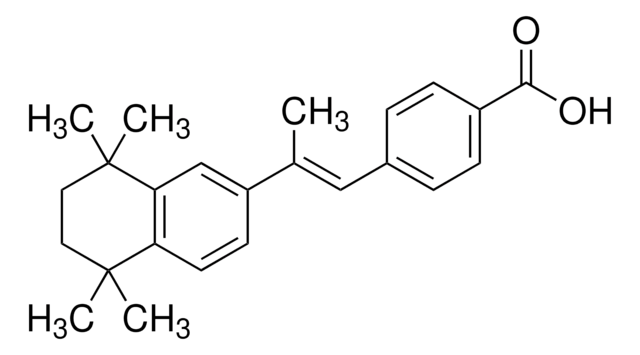524390
Phorbol-12,13-dibutyrate
Strong irritant for mouse skin, but only moderately active as a tumor promoter.
Synonyme(s) :
Phorbol-12,13-dibutyrate, PDBu, PKC Activator II
About This Item
Produits recommandés
Niveau de qualité
Pureté
≥99% (HPLC)
Forme
solid (crystalline)
Fabricant/nom de marque
Calbiochem®
Conditions de stockage
OK to freeze
Couleur
clear
Solubilité
DMSO: 10 mg/mL
Conditions d'expédition
ambient
Température de stockage
−20°C
InChI
1S/C28H40O8/c1-7-9-20(30)35-24-16(4)27(34)18(22-25(5,6)28(22,24)36-21(31)10-8-2)12-17(14-29)13-26(33)19(27)11-15(3)23(26)32/h11-12,16,18-19,22,24,29,33-34H,7-10,13-14H2,1-6H3/t16-,18+,19-,22-,24-,26-,27-,28-/m1/s1
Clé InChI
BQJRUJTZSGYBEZ-YVQNUNKESA-N
Description générale
Actions biochimiques/physiologiques
Na+,K+- ATPase
Conditionnement
Avertissement
Notes préparatoires
Reconstitution
Autres remarques
Lee, E.J., et al. 1994. Brain Res. 665, 127.
Critz, S.D., et al. 1993. J. Neurochem.60, 1175.
Iredale, P.A., et al. 1993. Biochem. Pharmacol.45, 611.
Critz, S.D., and Byrne J.H. 1992. J. Neurophys.68, 1079.
Hortelano, S., et al. 1992. J. Biol. Chem. 267, 24937.
Ward C.A., and Moffat, M.P. 1992. J. Mol. Cell. Cardiol.24, 937.
Informations légales
Mention d'avertissement
Danger
Mentions de danger
Classification des risques
Acute Tox. 1 Dermal - Acute Tox. 1 Inhalation - Acute Tox. 2 Oral - Carc. 2 - Eye Dam. 1 - Resp. Sens. 1 - Skin Corr. 1B - Skin Sens. 1
Code de la classe de stockage
6.1A - Combustible, acute toxic Cat. 1 and 2 / very toxic hazardous materials
Classe de danger pour l'eau (WGK)
WGK 3
Point d'éclair (°F)
Not applicable
Point d'éclair (°C)
Not applicable
Certificats d'analyse (COA)
Recherchez un Certificats d'analyse (COA) en saisissant le numéro de lot du produit. Les numéros de lot figurent sur l'étiquette du produit après les mots "Lot" ou "Batch".
Déjà en possession de ce produit ?
Retrouvez la documentation relative aux produits que vous avez récemment achetés dans la Bibliothèque de documents.
Les clients ont également consulté
Notre équipe de scientifiques dispose d'une expérience dans tous les secteurs de la recherche, notamment en sciences de la vie, science des matériaux, synthèse chimique, chromatographie, analyse et dans de nombreux autres domaines..
Contacter notre Service technique













